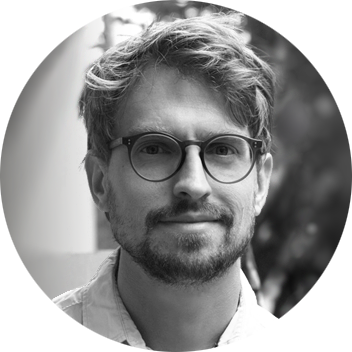E-Mail
Phone: +49 351 463 34941
Google Scholar
Website
Jakub Limanowski
Jakub Limanowski studied Psychology (Diploma) in Heidelberg, where he started working on body ownership illusions. He then obtained a Ph.D. in Psychology from the interdisciplinary Berlin School of Mind and Brain, where he worked on the neurocognitive mechanisms of multisensory and sensorimotor integration in the human brain, using brain imaging and computational models. His dissertation was awarded the Barbara-Wengeler price for bridging the gap between neuroscience and philosophy. Jakub proceeded to investigate human body representation as a Marie-Skłodowska-Curie Actions Research Fellow at the Wellcome Centre for Human Neuroimaging. Currently, he leads a junior research group at CeTI, funded by a Freigeist-Fellowship of the Volkswagenstiftung. The group’s research focus is on revealing the mechanisms by which humans adjust their neurocognitive body representation during adoption of virtual or robotic bodies for action.
Publications:
Projects/Cooperation within CeTI you are involved in:
- Neurocognitive mechanisms of attentional control during visuomotor adaptation (with Gesche Vigh)
- Neuronal correlates of visuo-motor performance depending on attentional set (with Felix Quirmbach)
- Age-dependent differences in visuo-motor delay perception (with Shu-Chen Li)
Further Questions:
What do you value most about your work at CeTI?
The possibilities for interdisciplinary collaboration and the proximity to state-of-the-art technological developments in robotics and digital communication.
What was your best moment at CeTI so far?
Probably the first day; being greeted warmly by all and being shown my office—it has a lovely view!
What else would you like to research?
I would love to play around with actual exoskeletons and bodily extensions.
How do you spend your spare time?
With my family and, if that allows for it, on my mountain bike.
Publications:
| 1. | Does temporal irregularity drive prediction failure in schizophrenia? temporal modelling of ERPs (Journal Article) In: Schizophrenia, vol. 8, pp. 23:1–9, 2022. |
| 2. | Precision control for a flexible body representation (Journal Article) In: Neuroscience & Biobehavioral Reviews, vol. 134, pp. 104401:1–18, 2022. |
| 3. | Enacting proprioceptive predictions in the rubber hand illusion (Journal Article) In: Frontiers in Human Neuroscience, vol. 16, pp. 839890:1–3, 2022. |
| 4. | A crucial role of the frontal operculum in task-set dependent visuomotor performance monitoring (Journal Article) In: eNeuro, vol. 9, no. 2, pp. 0524-21:1–12, 2022. |
| 5. | The computational neurology of movement under active inference (Journal Article) In: Brain, vol. 44, no. 6, pp. 1799–1818, 2021. |
| 6. | Human perception and neurocognitive development across the lifespan (Book Chapter) In: Fitzek, Frank H. P.; Li, Shu-Chen; Speidel, Stefanie; Strufe, Thorsten; Şimşek, Meryem; Reisslein, Martin (Ed.): Tactile Internet with Human-in-the-Loop, Chapter 9, pp. 203–228, Academic Press, 2021. |
| 7. | Cortical beta oscillations reflect the contextual gating of visual action feedback (Journal Article) In: NeuroImage, vol. 222, pp. 117267:1–11, 2020. |














